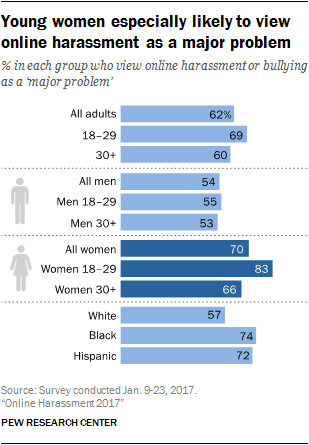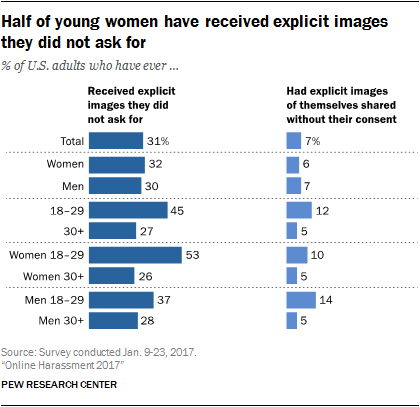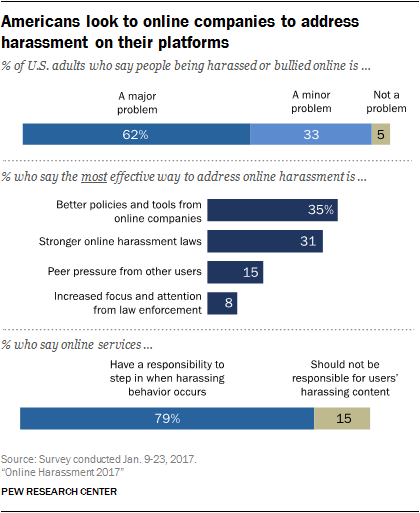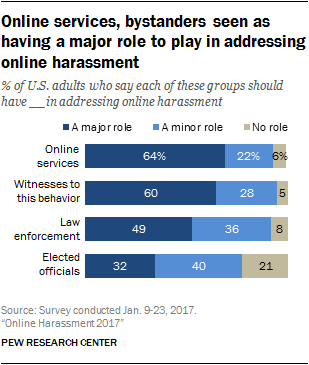Most Americans consider online harassment a serious problem, and about 40 percent of Americans have experienced harassment themselves. That’s according to the Pew Research Center’s latest survey.
What counts as “harassment?” Pew has a breakdown:
Around four-in-ten Americans (41%) have been personally subjected to at least one type of online harassment – which this report defines as offensive name-calling online (27% of Americans say this has happened to them), intentional efforts to embarrass someone (22%), physical threats (10%), stalking (7%), harassment over a sustained period of time (7%) or sexual harassment (6%). This 41% total includes 18% of U.S. adults who say they have experienced particularly severe forms of harassment (which includes stalking, physical threats, sexual harassment or harassment over a sustained period of time).
And while the report says the overall number of adults who have experienced this harassment has grown only about five percentage points since 2014, when you look at the demographics of who is harassed, you see clear divisions by age.
Fully 67% of 18- to 29-year-olds have been the target of any of these behaviors, including 41% who have experienced some type of severe harassment online. At the same time, harassment is increasingly a fact of online life for Americans in other age groups. Nearly half of 30- to 49-year olds (49%) have personally experienced any form of online harassment (an increase of 10 percentage points since 2014), as have 22% of Americans ages 50 and older (an increase of 5 points over the same time period).
Depending on who you are, your view of harassment will vary. Women, for instance, are more likely to see harassment as a problem online.
Women also report they’re more likely to be targeted because of their gender. Pew finds that men are more likely to experience harassment online, but “women – and especially young women – encounter sexualized forms of abuse at much higher rates than men.”
Some 21% of women ages 18 to 29 report being sexually harassed online, a figure that is more than double the share among men in the same age group (9%). In addition, roughly half (53%) of young women ages 18 to 29 say that someone has sent them explicit images they did not ask for. For many women, online harassment leaves a strong impression: 35% of women who have experienced any type of online harassment describe their most recent incident as either extremely or very upsetting, about twice the share among men (16%).
So what should be done? That’s where there’s another split. While most Americans say harassment is a problem, they don’t agree on what would be most effective in stopping it. Some say laws, others say social networks need to do more to stop abuse on their platforms.







